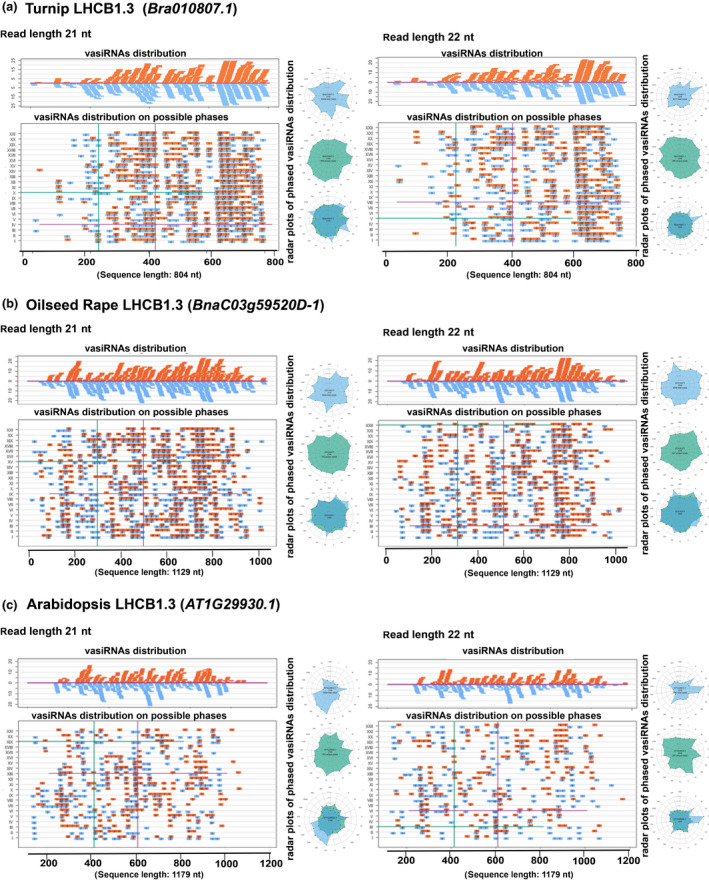Fig. 5.

Distribution and phasing of 21 nt and 22 nt virus‐activated small interfering RNAs (vasiRNAs) on the light harvesting complex protein 1.3 (LHCB1.3) transcripts of turnip, oilseed rape, and Arabidopsis thaliana. (a) The upper panels show the distribution of unique 21 and 22 nt vasiRNAs along the whole LHCB1.3 transcript of turnip (Bra010807.1; 804 nt in length). In the lower panels, vasiRNAs were distributed along each putative phasing pattern; that is, I to XXI (21 nt long vasiRNAs) or I to XXII (22 nt long vasiRNAs). Radar plots represent phased unique vasiRNA (light blue, top), redundant (pale green, middle), and a superimposition of the two (bottom). These analyses were performed with 21 nt (left) and 22 nt (right) vasiRNAs, respectively. (b) The analogous analyses as in (a) but performed with the whole LHCB1.3 transcript of oilseed rape (BnaC03g59520D‐1, 1129 nt in length). (c) The analogous analyses as in (a) and (b) but performed with the whole LHCB1.3 transcript of A. thaliana (AT1G29930.1, 1179 nt in length). vasiRNAs of sense orientation are represented in orange; vasiRNAs of 5′ to 3′ of negative antisense orientation are represented in light blue. Numbers inside vasiRNAs indicate redundancy.
